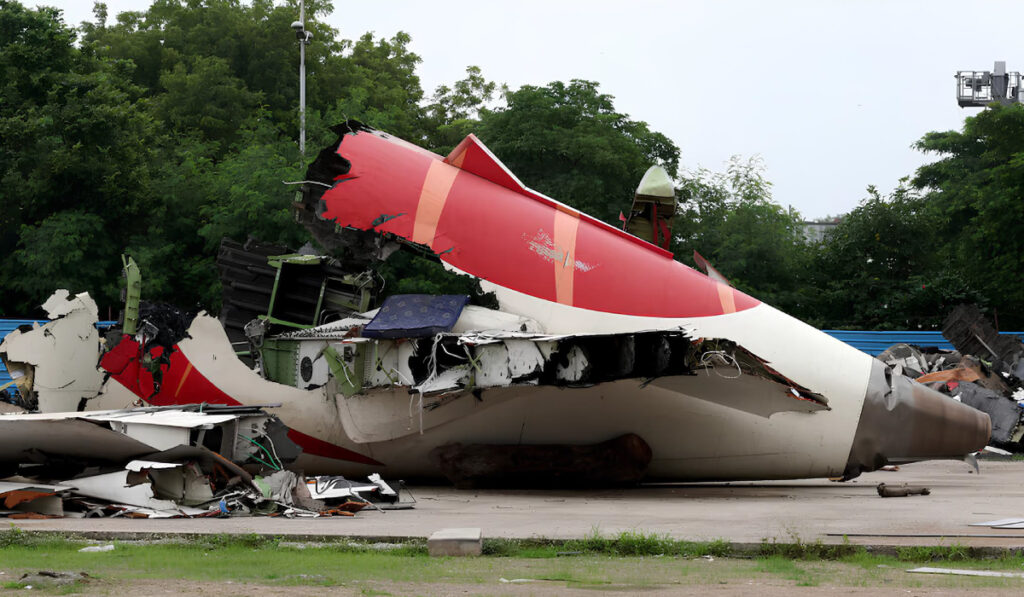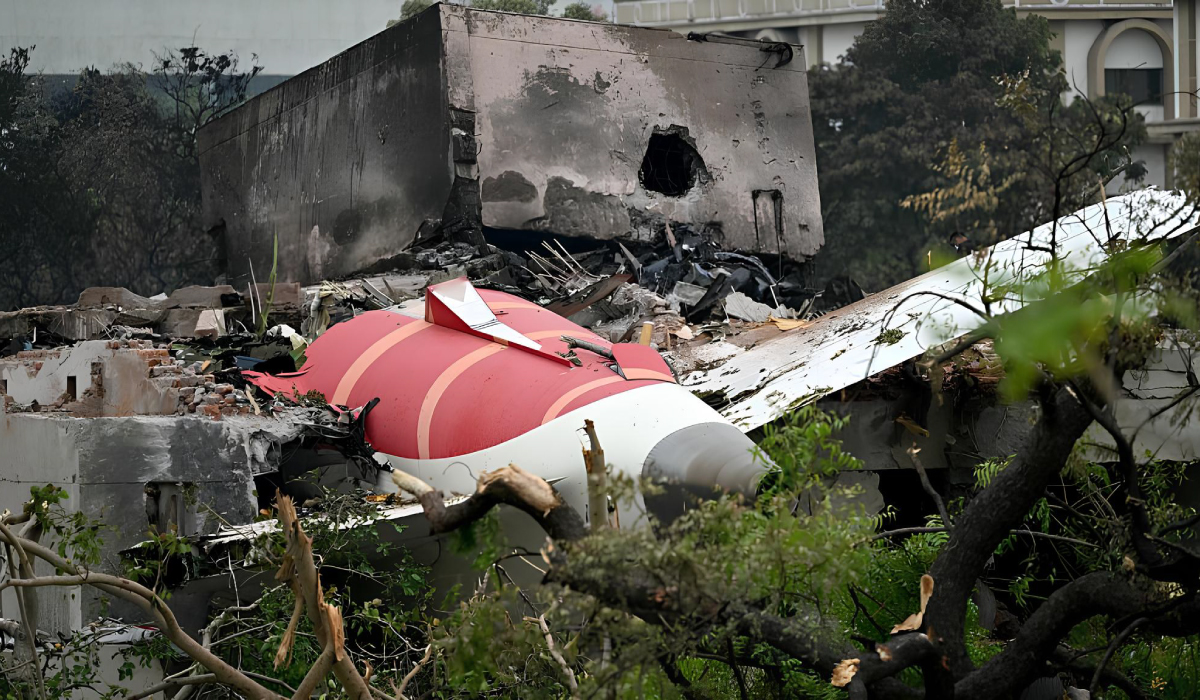Air India Flight 171 and the Revival of the Cockpit Video Recorders Debate
In June 2025, the Air India Crash cockpit video recorders issue took center stage following the tragic disaster of Air India Flight 171. The aviation industry was thrust back into a reopened debate over these critical safety devices. Safety experts and pilot unions clashed on the necessity and privacy of cockpit video systems. The tragedy, claiming 260 lives, has reignited urgent questions about aviation safety procedures and how to prevent future disasters.
The Air India 171 Catastrophe: A Tipping Point
The Air India Crash cockpit video recorders debate reignited after the tragic accident of Air India Flight 171, a Boeing 787-8 Dreamliner, which crashed just 32 seconds after takeoff from Ahmedabad’s Sardar Vallabhbhai Patel International Airport on June 12, 2025. The London-bound flight struck a densely populated area near BJ Medical College, killing nearly all 242 people on board and 19 on the ground.
Cockpit audio revealed confusion over how the fuel control levers were switched to the “off” position, cutting fuel to both engines. One pilot asked, “You didn’t put the fuel levers in the off position, did you?”—the reply: “No, I did not.”
This incident has intensified calls for cockpit video recorders to understand what actions were taken and why.
NTSB’s Long Standing Push for Cockpit Video Recorders
For 25 years now the National Transportation Safety Board has had campaign push for cockpit video recorders — we first asked that they be implemented back in 2000. Over time which is still ongoing the Agency put forth case that cockpit cameras’ role is to add a visual layer to data we get from our flight and cockpit voice recorders.
Jim Hall who was once NTSB Chairman reported on many accident cases which would have been helped by cockpit video evidence which included EgyptAir Flight 990, USAir Flight 105, and ValuJet Flight 592. NTSB has put forth that video records would help in determining the causes of the actions which in turn led to the changes in the aircraft’s controls.
In 2004 the agency added cockpit image recorders to what we may call the “Most Wanted” list of safety improvements, which we put forward to stress that this technology has the ability to provide key information on the flight crew’s actions during emergency situations.

Pilot Unions’ Fierce Opposition: Privacy and Safety Concerns Over Cockpit Video Recorders
Despite what the NTSB put forth again and again pilot unions have put up strong opposition to cockpit video recorders which they put forth privacy issues and that the footage may be used out of proper way. Also ALPA has put it that “what we see as the benefits of video imaging are over the top and in fact we have better tools available which we can use for accident investigation. .
Major issues brought up by pilot unions are that of cockpit video recorders:
- Privacy Violations: Pilots report that constant video surveillance would infringe on their privacy and also put them at ease which is not a good work environment. Also they note that they play out of which the100% record could take their normal flight behavior out of context.
- Performance Impact: Union representatives report that cameras will put into play a “observer effect” which in turn may impair pilots’ performance in emergency situations. They note that pilots may delay or avoid taking proper action which goes against set procedures if they are aware of being recorded.
- Misuse Potential: Pilots report that they are worried about the release of video footage to the media or use for issues out of the scope of safety investigation which in some cases may include that of disciplinary actions by airlines. In the past we have seen that this has come to pass, which has only served to strengthen these concerns.
The Technology Divide: Present vs. Proposed Systems
In 1967 the implementation of the flight data recorder (FDR) which logs technical information like altitude and airspeed and the cockpit voice recorder (CVR) which reports in on what is said in the cockpit became a requirement for commercial aircraft. These “black boxes” have also proven to be very valuable in the investigation of accidents.
Also in support of cockpit video recorders are advocates which present that visual element which audio and data do not. Video may show what the pilots did, instrument readings, and the environment in the cockpit which in turn gives a full picture of the pre-accident events.
Some manufacturers have reported to put in cockpit video systems in their aircraft. In the case of China’s COMAC which is to put the C919 into service we may see this feature included also which and in the case of helicopter makers like Airbus Helicopters and Robinson Helicopter Company they have made the cockpit recorders a standard fit.
International Perspectives and Regulatory Responses to Cockpit Video Recorders
The issue of cockpit video recorders is a global one. The European Union Aviation Safety Agency (EASA) and other international aviation bodies have put forth different solutions to this issue. Some countries have adopted the technology more so for use in smaller aircraft and helicopters which see less organized pilot union opposition.
The Federal Aviation Administration (FAA) has been against requiring cockpit video recorders which it says are issues of privacy and security that have not been properly addressed. In 2020 the FAA took a slightly different stand, they put forth that these issues do exist which they do bring up more so than before but also that they encourage the use of the devices on a voluntary basis.
Recent Legislative Developments on Cockpit Video Recorders
Congress has put forth effort to require cockpit video recorders which has also been a challenge. In the 2023 FAA Reauthorization Act the House did include a cockpit video recorder requirement but that provision was struck out before the bill went to passage. What ended up in the final bill was an extension of cockpit voice recorder requirements to 25 hours and we saw also the strengthening of privacy protections for CVR data.
The Air India Case: A Spark for Transformation
Air India 171 tragedy has put into sharp focus the issue of cockpit video recorders. In the wake of the accident aviation safety experts put forth that video would have had a role in clearing up issues of which pilot moved the fuel switches and what was the cause. Also that the preliminary report’s which pilots said what is an issue which audio only systems are unable to address.
Indian Commercial Pilots’ Association and Airline Pilates’ Association of India have put out that reports which point to human error as the cause of the crash are very much baseless and what we are dealing with is a case of reckless and unfounded insinuation. Also the fact that the incident is shrouded in mystery which saw the fuel switch moved has made many to question what more recording technology could have done to either prevent the tragedy from happening or at least to give us more clear answers.
Technological Solutions and Future Prospects for Cockpit Video Recorders
Modern in the last decade we have seen great advance in cockpit video recording technology which at the time of NTSB’s 2000 report was in its infancy. Today we see systems that are smaller in size, more reliable and which also play well with other aircraft systems. Also in to this space have come companies like Eye in the Sky and Kappa optronics which have put out aviation certified cockpit video systems that also in to the mix are offering high definition recording.
These systems can also provide a range of benefits which go beyond accident investigation, including:
- Flight training and crew performance evaluation
- Maintenance diagnostics and troubleshooting
- Insurance claim verification
- Operational procedure review
The Path Forward: Balancing Security and Privacy
Air India’s disaster has brought back to the fore issues of balance between safety in aviation and pilot privacy. It is put forth by some experts that we implement strong legal protections for cockpit video which we parallel that of voice recordings which we have at present, thus at the same time protecting privacy and improving safety benefits.
How to put into use present tech which at the same time improves safety and addresses the valid issues of aviation professionals.
Conclusion: Safety First in Cockpit Video Recorders
Air India Flight 171 which we had the tragic experience of saw it as a clear that which is that safety in aviation is an issue which is ever changing and must improve constantly. While we can understand the pilots’ association’s privacy issues, what also must be noted is the value of cockpit video recorders in preventing future disasters and in providing us with that which is critical in the investigation of what went wrong.
Will the issue of safety come out on top in terms of which the industry will push for greater use of safety tech, or will we see privacy issues put forward as a reason which in fact may have more to do with the slow adoption of cockpit video recording that in fact could save lives?
The response to this issue may set the stage for what measures will be put in place to prevent or at minimum better understand the future aviation accidents which in turn we will see if we are to repeat what went wrong in the past. In an industry that puts safety first this debate goes beyond technical issues it is a very basic question of the value we place on human life and what we are willing to do as a society to protect it.
>>> Get Latest News <<<
News Source: Reuters and Other web sources




